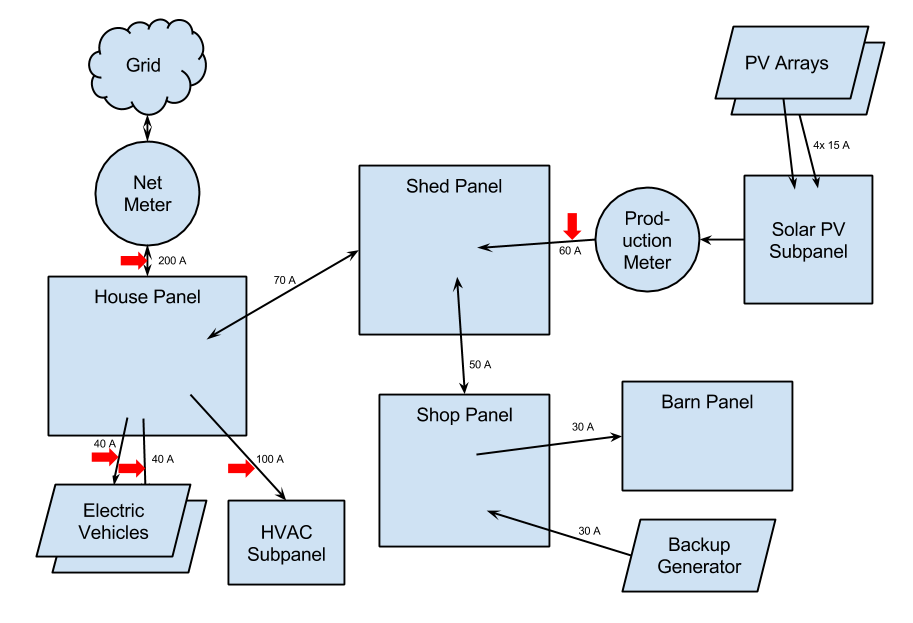QueenBee said:
Thanks! Spreadsheet updated. Your friend in Redmond now has a demonstrated MTBF over 92 years.
QueenBee said:
Row 147 is the original non integrated ground design.
That's too bad. I simply don't have very many M215IGs in the spreadsheet. Right now, there are only my 28 and your 15 that I am sure about for a whopping total of 43. In 20 years, we will have only amassed a grand total of 840 device years. For now, I guess I'll just have to keep the M215s mixed in with the M215IGs.
Computerizer said:
I am the owner of a system in your spreadsheet labeled "
Bellingham WA" under M215 and M250. My friend has been reporting the status (and he may continue to do so). I indeed have 24 M215s installed 10/4/2013 and 24 M250s installed 3/26/2014. None of them have had any failures of any sort. Just to confirm that my friend is telling the truth.

Thanks! I do wonder about QueenBee sometimes! :lol:
FWIW, your system now has a demonstrated MTBF above 133 years. Overall, the fourth-generation Enphase inverters have a demonstrated MTBF of around 475 years. That just means that in a system with the number of inverters you have, you can expect to have one inverter fail about every 10 years. Then they will fail more quickly toward the end of their lives, which hopefully will not come for another 25 years or so.
Computerizer said:
By the way, my ex-wife works for an installer who used to install several dozen Enphase inverters per week. She could probably get some stats from all of their systems if you want....
Thanks! Even though we are a bit shy on M215IGs and M250s, I think I'll stick with what we have here for now. It's easiest for me to get occasional updates from this forum.
Overall, here are my current impressions of the Enphase products out there:
M190: Enphase made the mistake of printing the words "- MTBF of 331 years" on the original M190 datasheet (since removed). Simply put, they have not lived up to that billing. The actual MTBF in the field seems to be more on the order of 44 years overall, with a few customers experiencing MTBFs as low as 5 years. Such a system with 50 M190s would experience about 10 failures EACH YEAR. Fortunately, Enphase has so-far been good about providing replacements, with the current replacement being a fourth-generation microinverter with better maximum voltage specifications. Enphase never made the mistake of quoting MTBF on any datasheet again.
D380: The D380 was basically two M190s in the same package. Unfortunately, that simply multiplied the failure rate. It seems Enphase recognized that product as a mistake pretty quickly and moved on. In fact, I believe Enphase has swapped out the entire set of microinverters on some (many?) systems containing D380s with M215s, including upgrading the cabling to Engage.
M215: I am convinced that the original M215s actually contained similar electronics (third-generation) to the M190s, but in the new Engage-compatible package and likely with known failure modes eliminated or reduced. To date, I have recorded five failures of these inverters. Unfortunately, three of those five failures are from a single system of 16 inverters belonging to GetOffYourGas up in NY state. That system currently has an MTBF for M215s of only 25 years. In contrast, the 58 original-style M215s in QueenBee's system have experienced no failures to date, demonstrating an MTBF of over 236 years (10X better). That seems to match the behavior of the M190s with some systems having much lower MTBFs than others. Had GetOffYourGas' system not been in my spreadsheet, the calculated MTBF of M215s would now be over 1000 years. But it IS in the spreadsheet and we are seeing and MTBF of around 500 years. That is still little consolation to GetOffYourGas, who can probably expect more than one M215 failure every two years.
M215IG and M250: So far I have not recorded a single failure of any of these fourth-generation inverters. That said, I have only recorded about 360 device-years for these inverters and the oldest ones have only been in the field about 2.5 years. In any case, I feel very good about the reliability of these units. Otherwise, I would not have purchased 41 of them! I also really like the Engage cabling system, price notwithstanding.
S230 and S280: I have no opinion about the reliability of these fifth-generation inverters as they are just now showing up in the field. Personally, I'll stick with the M-series inverters since my Envoy and the backup I purchased for when it fails are not compatible with the S-series microinverters.
Envoy: It seems that Enphase has greatly improved the MTBF of the Envoys from the very early units. The MTBF of the Envoys installed with M190 systems had an MTBF of 28 years, while the Envoys installed with M250s had an MTBF of double that at 56 years. While I do not have any reliability information on the Envoy-S, I will note that Enphase has increased their warranty to 5 years on those units.


